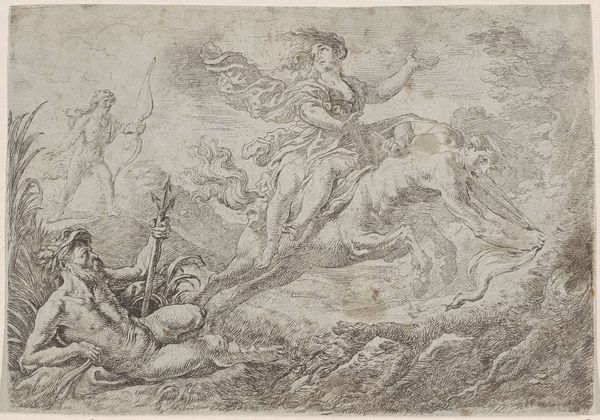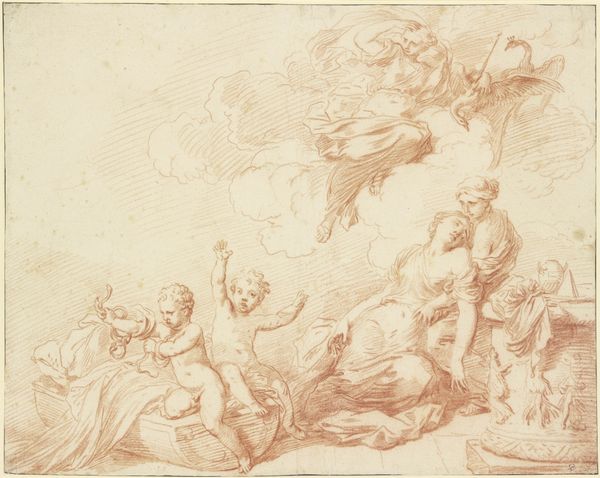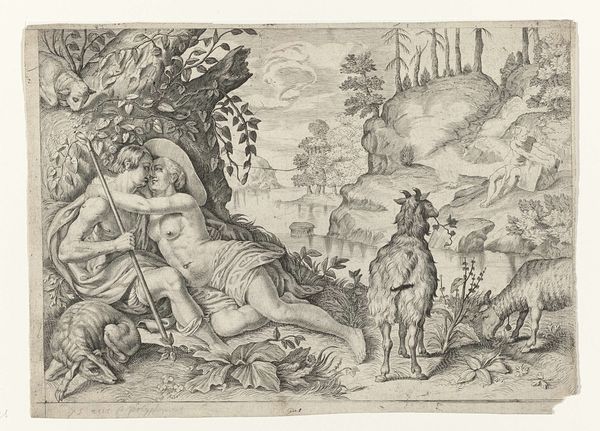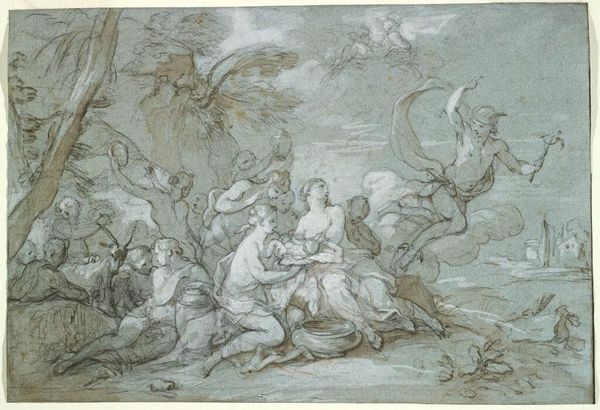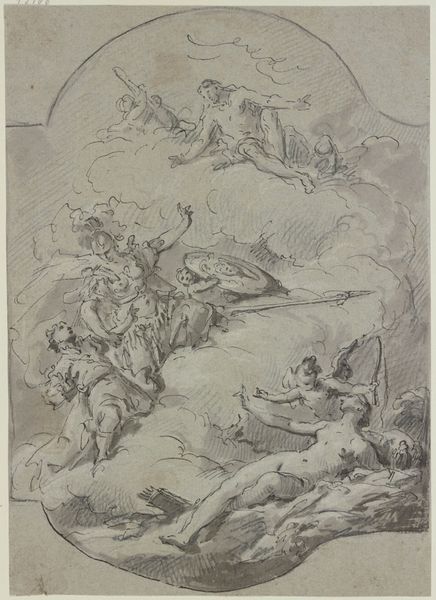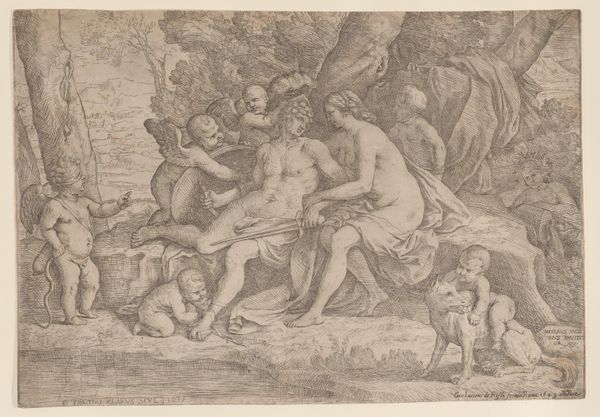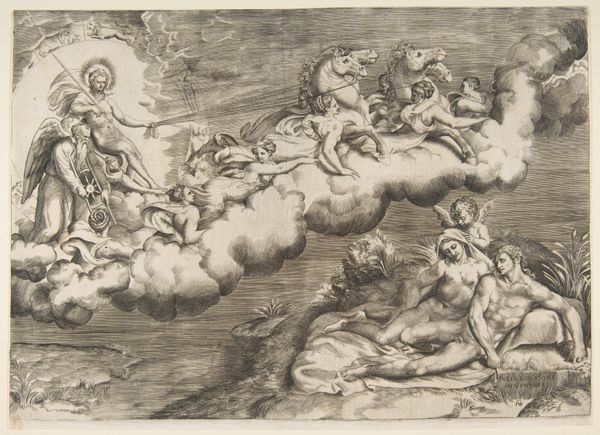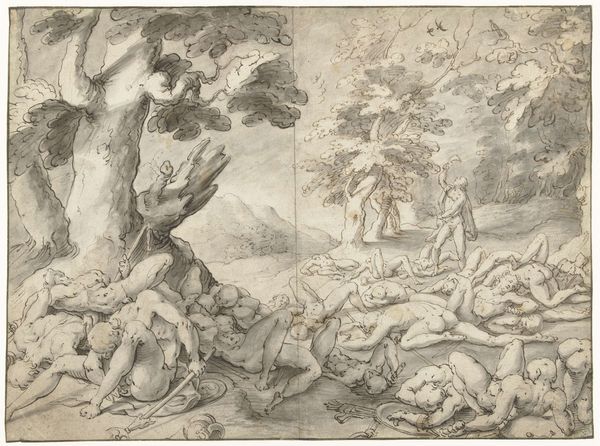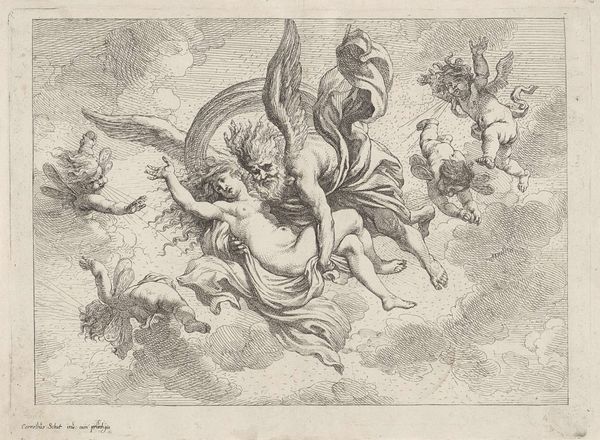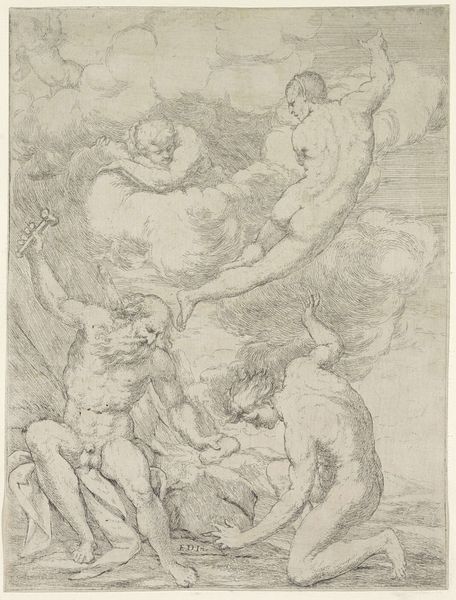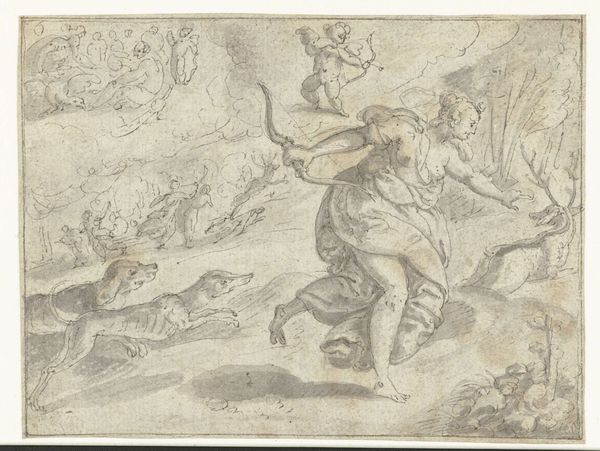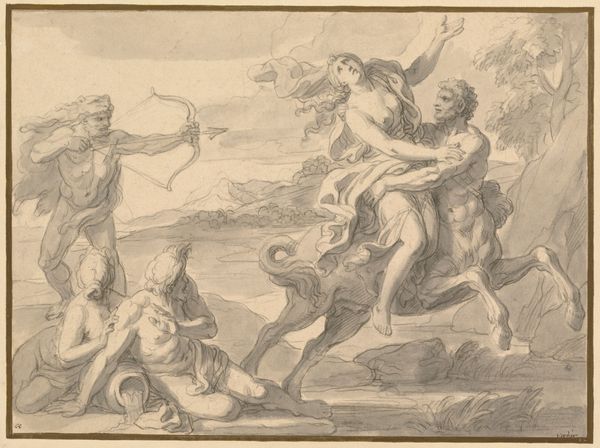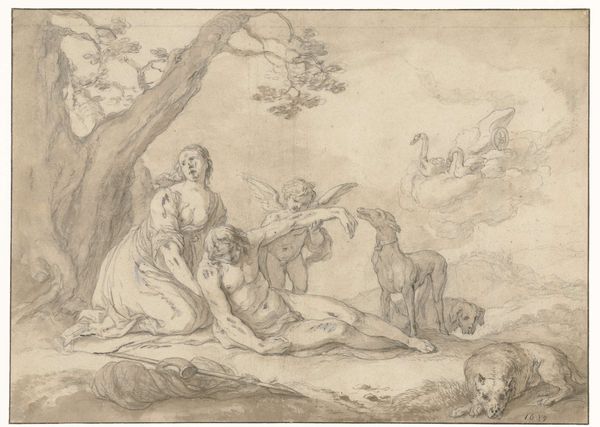
drawing, ink, pencil, graphite, pen
#
drawing
#
allegory
#
ink painting
#
pencil sketch
#
mannerism
#
figuration
#
ink
#
pen-ink sketch
#
pencil
#
graphite
#
pen
#
watercolour illustration
#
italian-renaissance
Dimensions: height 90 mm, width 118 mm
Copyright: Rijks Museum: Open Domain
Editor: This is "Jupiter verbant Cupido uit de hemel," or "Jupiter banishing Cupid from Heaven," a pen, pencil, and ink drawing from around 1575-1580 by Jan Snellinck, here at the Rijksmuseum. I'm struck by the dynamism – there’s so much movement and energy conveyed through the lines. What do you see in this work? Curator: It's a compelling piece, isn’t it? Beyond the dynamism, I see a powerful assertion of patriarchal authority and the suppression of alternative forms of love and desire. Think about Jupiter, the ultimate patriarchal figure, literally banishing Cupid, a symbol of disruptive, often uncontrollable desire, especially same-sex desire which was often condemned during the Renaissance. Editor: Interesting. So, you're saying this isn't just a mythological scene, but a statement about power? Curator: Precisely. Mannerism, the style Snellinck employs, often utilized allegory to address contemporary social and political issues. Jupiter’s act of banishment can be seen as representative of the era’s attempts to control and punish those who challenged societal norms around gender and sexuality. Who gets a place at the heavenly table, and who gets thrown out? And how does that connect with Snellinck’s own social location and context? Editor: I never thought of it that way. I was focused on the aesthetics and the mythological story, but now I see the layers of social commentary embedded within. Curator: Exactly! By examining the artwork through an intersectional lens – considering gender, power, and historical context – we reveal a deeper, often uncomfortable, truth about the values and biases of the past. It provokes questions about who is allowed to express love freely and who faces societal reprisal. Editor: It completely reframes the artwork. I see it not just as a drawing, but as a document reflecting power structures and societal anxieties. Curator: And that’s the power of engaging with art history through contemporary theory. It transforms our understanding and compels us to ask critical questions about the world we inhabit today. Editor: Thank you. I’ve learned so much. I’ll definitely approach similar artworks with a more critical and questioning eye in the future.
Comments
No comments
Be the first to comment and join the conversation on the ultimate creative platform.
